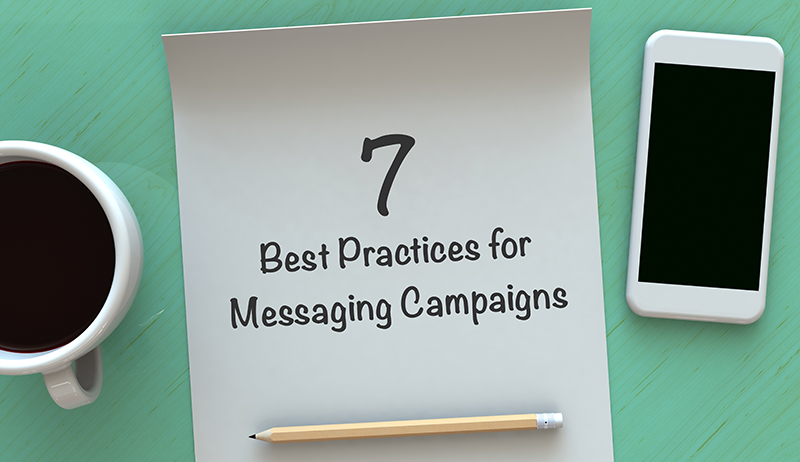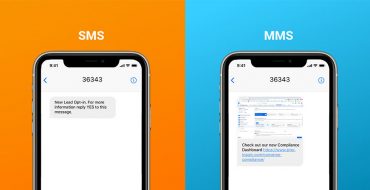
Conversational text messaging is a growing preference for consumers with brands they want to hear from. Like any channel or mode of communication, there is etiquette to follow. Some of it is based on regulatory requirements and other parts of it are useful for building engagement, reach, and relationships with your prospects and customers.
The following 7 Best Practices for SMS Messages will help to ensure your text messaging campaigns provide the results you’re intent on achieving.
This isn’t a “nice to have” thing to do, it’s a regulatory requirement. And, with GDPR, go for double opt in. Invite your target audiences to opt-in via a keyword to receive messages on a specific topic. Once they text the keyword, send an automated response for them to confirm.
And, just as your audience needs to consent to hear from you via text message, they also need the ability to opt out, should they want to. “Text STOP to cancel” will do the trick.
Text messages are still considered a personal form of communication. Even though a growing majority of consumers say they want to receive messages from brands, make sure your message conveys value through urgency or information that matters to the recipient based on why they opted in to hear from you.
Segmentation is critical for relevance. You can create keywords for different topics or personas to match messaging flows. Just as you do with email campaigns or ad placement, messages will resonate with different people for different reasons. When a prospect or customer chooses to opt in via a keyword they are telling you what they’re interested in learning more about. Message them what they ask for.
Text messaging can be used as a standalone program or as a blended approach to enhance and connect your content used in other programs and channels. Offers, discounts, and coupons received via text message are redeemed at a much higher rate than other forms, including email and print.
Loyalty and rewards are also acted on more often when received via text message. This is likely due to consumers always having their phones with within reach.
For a blended approach you can use a text message to remind a prospect to check their email to get access to your latest report. You can include a link to a video on YouTube or to drive traffic to your website for relevant content offers. Or, you could use it to drive registration for a webinar or event.
You may also use a message to offer long-form content by giving the recipient the option to choose to have the content delivered to their email, so they can view the content on their laptop or PC when convenient.
But perhaps one of the best ways to gather prospect and customer intelligence is to ask them. Surveys via text message can help to inform you about your audience’s needs and wants so that you can route them into the appropriate text message campaigns to drive higher engagement.
An SMS message is limited to 160 characters, so use them wisely. Or, use an MMS when sharing a picture or video to complement your message, which can span up to 1,000 characters.
The last thing you want to be is boring, so craft your messages to be compelling to your audience based on their interests and their conversational history with you. An advanced text messaging platform provides analytics and insights that help with personalization and relevance given the conversations you’ve had with each prospect or customer across the entire customer lifecycle.
Remember that texting is a two-way street. A conversation requires the back and forth exchange of ideas and information. While advanced text messaging platforms enable you to automate conversations, you can also build alerts into your messaging flows for when your audience asks a question or asks for help. This alert will notify a team member to step in and take over the conversation easily as she can see the conversational thread and step right in to provide the answer in context.
No one wants to hear from a brand in the middle of the night. Make sure to coordinate your messages to send during business hours based on your audience’s geography and time zone. Create lists based on geography to help make sure no one hears a notification ping at 2AM.
Keep messages to around 4 per month to avoid saturating your audience’s messaging inbox. See the Go for the Value Play tip above.
Conversational text messaging campaigns have limitless potential. Messaging is quickly becoming a preferred channel for communications between brands and consumers. Messaging, done well, will help you combat the noise and chaos of the internet and the email inbox to get you heard and in the conversation.
Automated text campaigns can drive much higher performance than other modes of communication based on relevance and context. The best practices presented here will help to ensure that your campaigns are effective, whether for marketing, sales, or service.

Nov 07, 2019

Dec 05, 2018
Stay updated on business text messaging
Text MAGIC for Demo to
USA: 36343
AUS: (61)409564682
UK & ROW: +44 7860017509
Email: care@sms-magic.com
Recent Comments
Interdum luctus accu samus habitant error nostra nostrum
Lance BogrolDoloremque velit sapien labore eius lopren itna
Lance BogrolInterdum luctus accu samus habitant error nostra nostrum
Fletch SkinnerInterdum luctus accu samus habitant error nostra nostrum
Chauffina CarrDoloremque velit sapien labore eius lopren itna
Hans Down